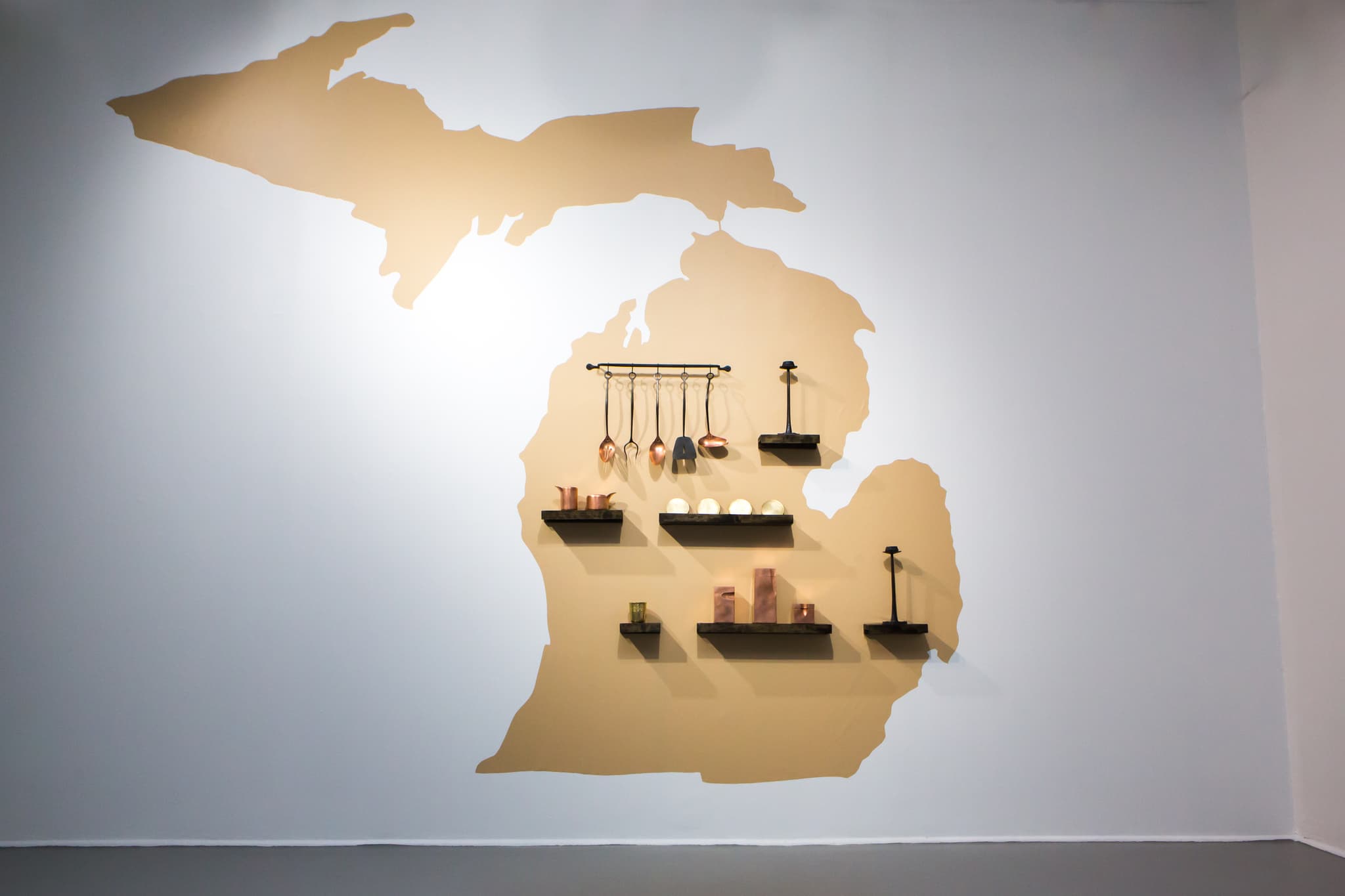Someone once told me that if you want to make a small fortune in the arts, you need to start with a large one. We’ve been conditioned to believe that there is an inevitable sacrifice that must be made for a career in the arts, yet Lucas Spivey shows us otherwise. The Boston Center for the Arts (BCA) Mills Gallery, “Culture Hustlers: Artists Minding Their Business,” bridges the daunting gap between art and business in the form of a cross-country exhibition.
During the summer of 2017, Spivey held a residency at, or rather, in front of the BCA plaza. In an unconventional, but entirely fitting millennial manner, his on-the-go “Mobile Incubator” offered advice to the South End arts community. Returning to the BCA, Spivey brings with him a curated display of arts endeavors from his travels around the United States, highlighting the “inventive” business models of five commercially successful artists and designers.
The first featured artist is Kristin Farr, a San-Francisco based painter and muralist whose business tactics directly reflect her proximity to Silicon Valley. Farr has launched an app “Farr Out,” that enables users to create digital art on their phones, and has received commissions from tech giants including Facebook, Google, and Uber. She has produced work for music festivals and collaborated with Nike. Farr’s work references pop art, abstract expressionism, and geometric abstraction, specifically relating to the works of Frank Stella and Sol LeWitt. The patterns and psychedelic color combinations, however, feel as though they lack an original voice; Farr is not the first to recreate work in this style and will certainly not be the last. Her work is undoubtedly eye-catching and visually appealing, but beyond that can seem somewhat vacant. Farr’s work brings to question the balance between “good business” and free artistic expression. Does the commercial success of an emerging artist demand an adherence to mainstream taste?
The art covering the walls of tech company headquarters, as Farr’s does, is typically bright and energizing, meant to inspire employees while casting a playful tone over the workspace. These murals and installations tend to be neutral in message and this comes as no surprise. A public company does not want to make controversial political and social statements, especially with shareholders to please. If this is the type work that receives large commissions in a business or corporate setting, what does that say about how an artist’s voice is valued? Is it necessary for an artist’s work to lack deeper meaning in order for it to be acceptable for a corporate setting?
Chicago-based painter Derek Erdman is another featured artist and “prank artist”. He works within a world of meme, pop, and celebrity culture, simultaneously participating in, and poking fun at, internet humor. Yes, there are pictures of cats, angst-y quips, and even a Kardashian reference amongst his exhibited pieces. Erdman’s work undeniably captures the zeitgeist of millennial culture and his nearly 14,000 Instagram follows verify his success and popularity. But as noted in Kristin Farr’s work, Erdman’s paintings feel bound within what is considered acceptable by mainstream culture. Their work is familiar, comfortable, and recognizable, and while that combination can fuel financial success, it begs the question, does profitability come at the expense of authentic artist expression?
Culture Hustlers shatters the stereotype of the starving artist. The exhibit spotlights people who prove that artists can be savvy entrepreneurs, finding success through creative and forward-thinking means. These artists adapt to new technology, utilize social media to grow their business, and participate in incubators, much like anyone trying to get ahead in their industry. The potential issue that arises from the exhibit is the lack of voice present in the work and what that says about the salability of art that goes beyond visual aesthetics.
I think we can all agree that for artists who are forced to operate under capitalisms constraints, a serious limitation is at play. For the artists at “Culture Hustlers” a presentation of savviness, combined with creativity proves that this limitation can be overcome, but not without sacrifices. The immersive exhibition is a testament to the power of network and creativity from around the United States, capable of striking both inspiration and careful critique of the grander societal implications of when art meets business.




